Published May 10, 2023
This is Why We 'Live Long and Prosper'
In honor of Jewish Heritage Month, we're looking back at the history behind the Vulcan Salute.
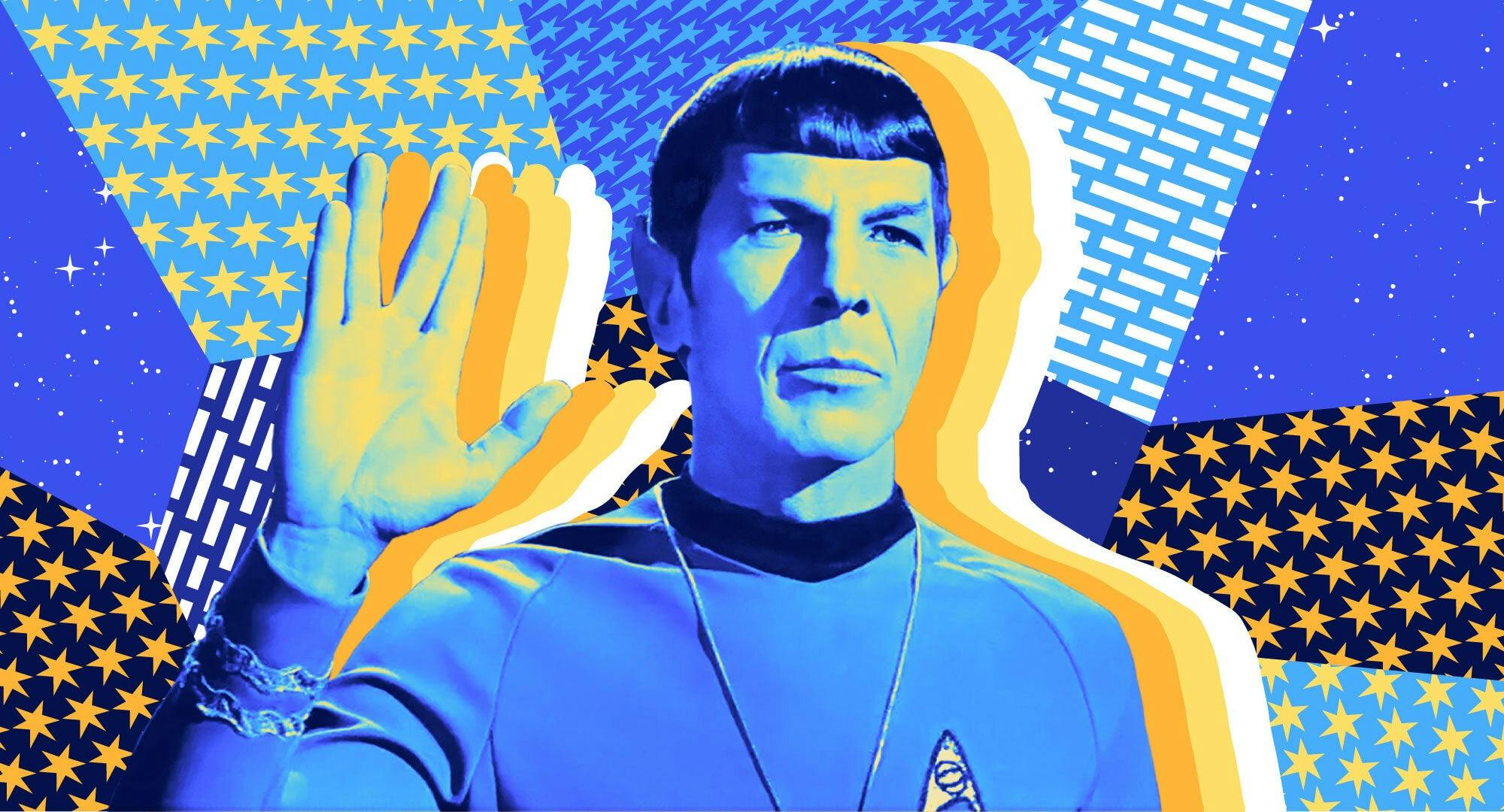
StarTrek.com / Rob DeHart
"Live Long and Prosper."
These words are immediately recognized and associated with Star Trek and its fandom, and the Vulcan salute is an even more recognizable extension of that phrase. The salute’s origin, however, doesn’t come out of the vast final frontier, but instead from Leonard Nimoy’s Jewish heritage.
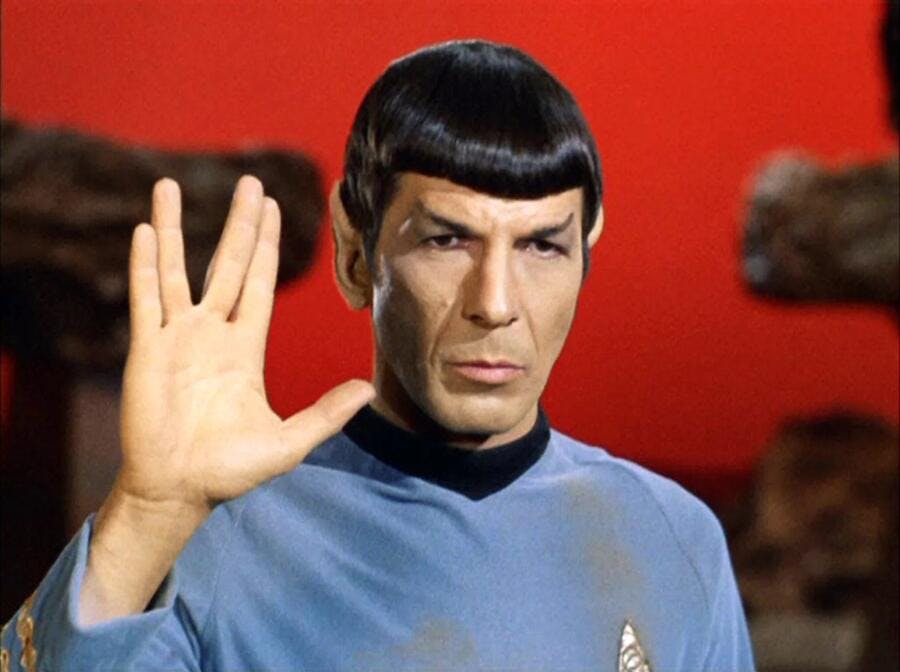
StarTrek.com
Gene Roddenberry’s mission for Star Trek was always to tell stories that included elements from a diversity of cultures, be they alien or of Earth. When Leonard Nimoy had an idea for a Vulcan greeting, Roddenberry let him bring along a piece of his culture. Nimoy introduced the hand sign of the Kohanim Jewish blessing, which would become the Vulcan salute.
In a project for the Yiddish Book Center, Nimoy recounted the story of the first Star Trek episode where Spock visits the planet Vulcan in the Season 2 premiere, "Amok Time." Spock was to visit his home planet to be married, and it would be the first time another Vulcan would be seen on-screen. After considering the the greetings people have across cultures, Nimoy thought the Vulcans should have their own.
Though most of us immediately recognize the salute as the Vulcan greeting, its true origin comes directly from the Torah. It represents the Jewish Priestly Blessing of the descendants of Aaron. Aaron is the Jewish High Priest, and the sons of Aaron are Priests, or the Kohanim.
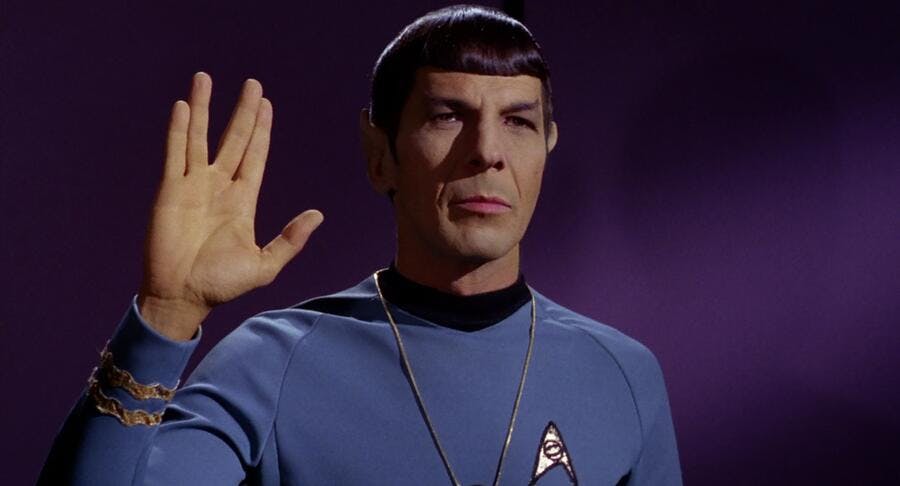
StarTrek.com
I chatted with Rabbi Morrison of Beth Emeth Synagogue in Toronto, Ontario, an expert on both Judaism and “nerd TV culture,” who told me more about the origin of the salute. “When the Kohanim do the Priestly Blessing, they take their two hands and bring the thumbs together and it’s like the ‘Live Long and Prosper’ sign.”
The version in the blessing differs slightly, Rabbi Morrison continued, “[Spock] only does it on the show with the one hand, but the Kohanim, when they do the blessing, take the two hands, connect the thumbs to make the Hebrew letter 'Shin.'” Shin is the first letter of Shaddai, one of the names given to G-d in the Torah. [Writer's Note: As Jews, we are not to type, write, or say the word for god — capitalized — unless in an in-context blessing.]
The hand sign is done during the performance of the blessing by the Kohanim who stand at the front of the sanctuary and bless the congregation. Historically, this was done daily in the Beit HaMikdash, the Holy Temple, when it stood in Jerusalem. “You needed the Kohanim and their officiating to be able to fulfill certain Jewish practices,” Morrison said, “Now, the blessing is done ‘symbolically’ by the Kohanim daily in Israel, and outside during festivals.”
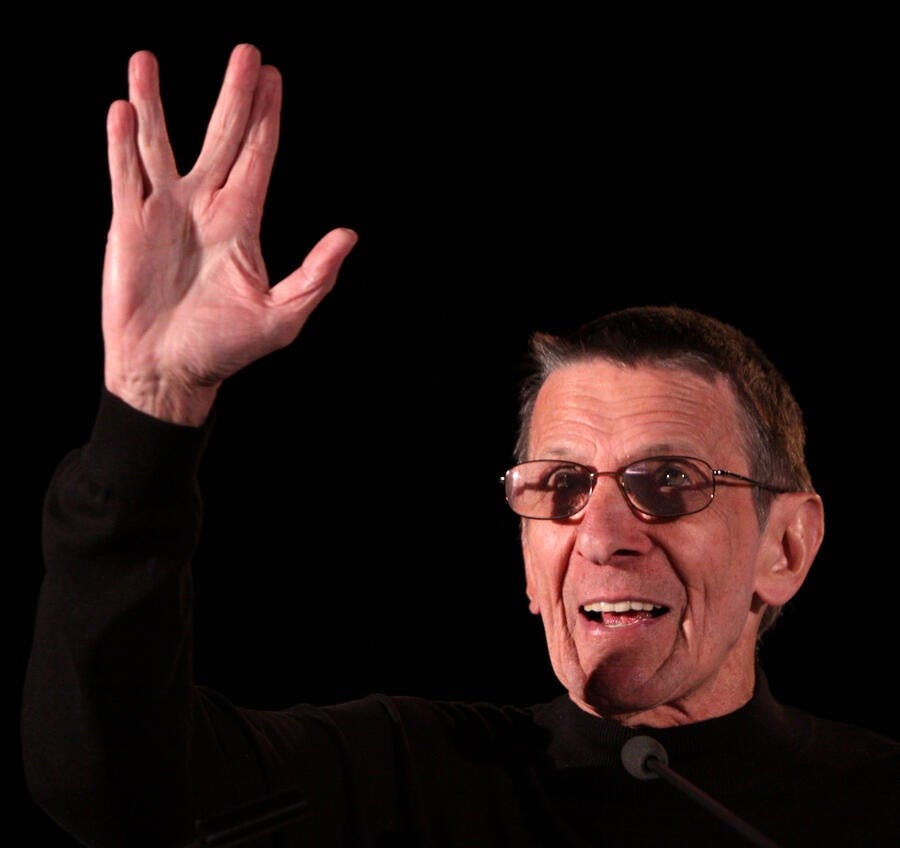
Gage Skidmore
The words in the blessing itself are part of the Amidah, the daily prayers, but the sign we know as the Vulcan salute is only done when the Kohanim are called upon to stand before the congregation and recite them.
The Lord spoke to Moses, "Speak to Aaron and his sons,This is how you bless the people of Israel, say to them,'The Lord will bless you and protect you,the Lord will go kindly and graciously with you.The Lord will bestow his favour upon you and grant you peace.'Thus, they shall link my name with the people of Israel, and I will bless them."— Bemidbar, Chapter 6, Verses 22-27
Though Jewish fans of Star Trek might be thrilled by the addition of something so deep in our culture, many of us have never seen the hand sign used in religious practice. When the Kohanim perform the blessing and show the salute, the congregation is meant to turn away.
Per Rabbi Morrison, “You’re not supposed to look when the Kohanim do the blessing and ‘salute’ because you are supposed to be focusing on the words and thinking of G-d as opposed to focusing on the people saying the words.” There are varying beliefs as to why one should turn away, Nimoy was told you could die for seeing the feminine side of G-d appearing during the blessing. “There are some who believe that if you look, you will go blind, but the idea is that the focus should be on hearing the words and internalizing the meaning of the words and not looking at the Kohanim who are doing it. But neither Nimoy or I could help ourselves — we peeked."

StarTrek.com
The Spock actor recalled a time he attended synagogue and his father told him not to look when five or six men went to the Bima (the raised platform at the front of a synagogue where readings are done) and began shouting a blessing. He knew something “major” was happening; so, young Nimoy peeked to see those men with their hands poking out from their Tallit (a scarf like garment worn by Jews, draped over their heads during this blessing) in a striking hand sign that he thought was “magical.”
Years later, Nimoy would suggest this magical hand sign extend from his personal heritage to that of his character. Though Nimoy could flash the sign with ease, not every Vulcan could. Celia Lovsky, who played T’Pau, the Vulcan Minister, was unable to do the sign on her own and had her fingers taped together for production. Zachary Quinto allegedly had some trouble with the salute and did some Vulcan finger exercises while preparing for his most logical role. It was said his fingers were glued together for production, but Quinto swears this is just a rumor. Though I can’t say for sure, I have a suspicion that Arlene Martel, who played Spock’s bride-to-be, T’Pring, a fellow Eastern-European Jew, could probably flash the sign with ease.
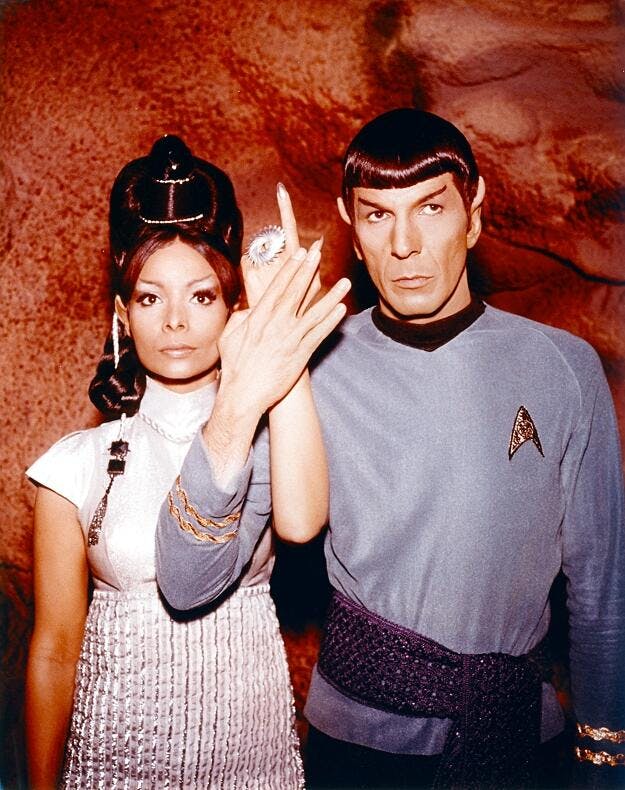
StarTrek.com
This notorious hand sign has become a salute for Star Trek fans worldwide. This one element added a layer to what Gene Roddenberry did — ensuring diversity on-screen and allowing the actors to bring elements of themselves to the characters. For Jewish Trekkies like me and Rabbi Morrison, two incredibly important aspects of our lives get to intersect. “It brought all of my worlds together. It brought my TV world and my Jewish world together like they were one.”
This article was originally published on May 17, 2019.
Lindsay Traves (She/Her) is a writer based in Toronto where she lives with her dog, Spock. After submitting her Bachelor’s thesis, “The Metaphysics of Schwarzenegger Movies,” she decided to focus on writing about her passions which include sci-fi, horror, sports and comics. She’s been published in Grim Magazine, CBR, Nightmarish Conjurings and more. Follow her on Twitter @smashtraves.
Stay tuned to StarTrek.com for more details! And be sure to follow @StarTrek on Facebook, Twitter, and Instagram.





